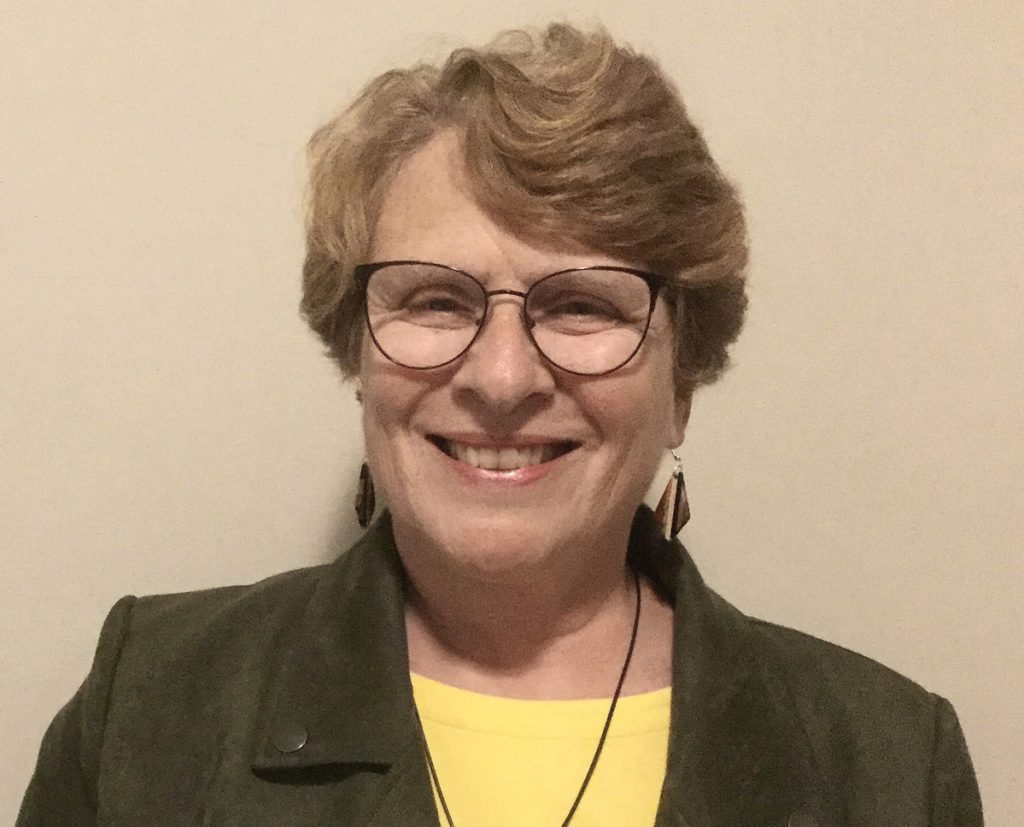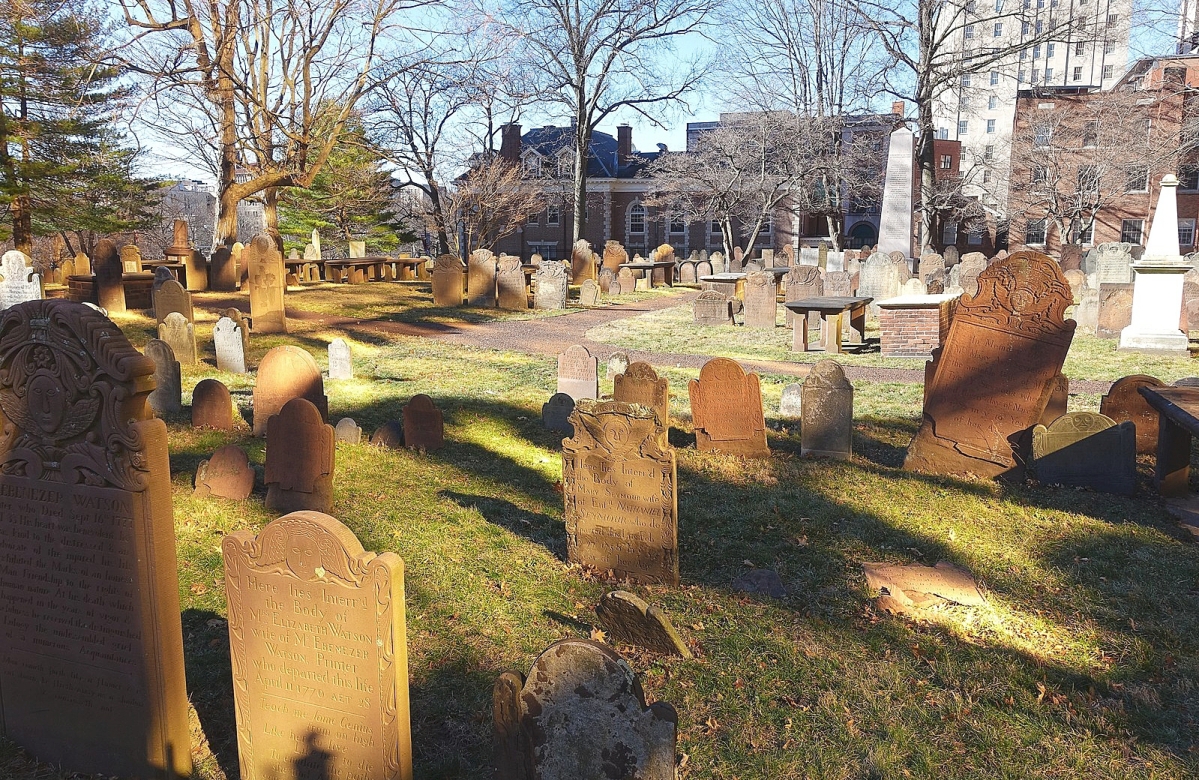
Dr Katherine A. Hermes
Dr Katherine A. Hermes is the director of “Uncovering Their History: African, African American and Native American Burials In Hartford’s Ancient Burying Ground, 1640-1815,” a website of all burials of this kind known in the city’s oldest historic site. Hermes’ extensive professional background includes a JD from Duke University’s School of Law and a PhD in colonial American history from Yale University. She teaches courses on Anglo-American legal history and Native Americans of the Eastern Woodlands, as well as other courses in early America, at Central Connecticut State University. Antiques and The Arts Weekly corresponded with Hermes via email to learn more about this important project.
How did you become involved with “Uncovering Their History?”
In 2018 the Ancient Burying Ground Association (AGBA) in Hartford put out a call for proposals for a researcher to find out how many people of color were actually buried there. A number, 300, had always been cited but with no information about how anyone arrived at that number. The ABGA wanted a report that included how many, and some demographic data about them, perhaps with a few stories.
I proposed working with a team from Central Connecticut State University, where I taught, to create a virtual memorial for the people we found; individual profiles, ancestry.com family trees, and occasional RelationshipTreesTM to show people’s community connections. ABGA chose my proposal.
Why is the Ancient Burial Ground in Hartford, Conn., a prime location for this kind of study?
Hartford is an old city. It was called Suckiog by the Wangunk people, the Indigenous community that lived there at the time of contact. When English people settled there at the behest of Sequassen, the Wangunk sachem (chief), the Dutch were already present and had enslaved Africans with them. There was a large Native community. In the next 200 years, Hartford’s population of Africans and their descendants grew. Connecticut has a myth that slavery was both rare and more benevolent here than in the South. It’s a history that was begging for investigation. Almost everyone who died in Hartford was buried in the Ancient Burying Ground, so it gave us a large number of people to work with.
Is there a particular historical figure you and/or the team discovered that was particularly impactful?
There were so many incredible stories, but I think one of the most powerful for me is that of Phillip and Ruth Moore (sometimes spelled More). Both Phillip and Ruth left wills in 1695 and 1696, respectively. They were a free family of color, though their son-in-law was indentured to Rev Timothy Woodbridge. They owned land and lived among their white neighbors as fellow churchgoers. They were literate. They should have been upwardly mobile like their white counterparts. Enslavement of Africans rather than Native people started to grow exponentially in Connecticut around 1700, and with it came oppressive legislation and racist beliefs about Africans. Phillip Jr died two years after his mother, leaving a widow with several children. While some neighbors pitched in to help, Phillip Jr’s sons had to quitclaim the land. The family disappeared from the records. I think about the Moores, and still look for them from time to time.

The Ancient Burying Ground in Hartford, Conn.
What kind of research would you like to see being done more in early American studies?
I would like to see more research that digs deep into the connections between people of color. So often research collects examples that are never cross-referenced with other corresponding records. Now that enslaved.org [a database of people who were enslaved, owned slaves or participated in the slave trade] and other projects are trying to collect databases so that individuals can be located and followed, I think we’ll have richer stories about their experiences. Rather than treating the histories of people of color as esoteric or episodic, I would like to see them made central to the whole of our history to reflect the truth about the past.
Are there any misconceptions about this kind of work that you can dispel?
Many people probably think DNA and archaeology are the ways to discover the Indigenous and African American past. We used only archival sources, and from those archives came a rich set of stories that includes genealogical information, historical argument about large themes and myth busters. It turns out Hartford had many enslaved people, all of whom suffered punishments, injustices, malnutrition, sales of family members – the same things one might expect on a southern plantation.
What advice do you have for scholars and researchers looking to do this kind of work in their own local cemeteries?
There’s a mantra that “few records exist for people of color.” Never assume you can’t find anything.
We began with Nineteenth Century published “sexton’s lists” purporting to list the people known to have been buried in the burying ground. When we dug into manuscript sources, we learned many people of color were omitted from those published records. We used account books, probate records of white, Black and Indigenous people, church records, newspapers, seamen’s protection certificates, court cases, censuses and a poem commemorating an epidemic to cull the names of people of color. We also used “lore” to try to track down more accurate facts.
Do you have any upcoming projects to share with our readers?
Currently I am working as part of an advisory team on a project with CRIS Radio for a National Park Service Battlefield Interpretation Grant called “Forgotten Voices of the Revolutionary War: People of Color and the Redding Encampment, 1778-1779.” We’re exploring the lives of the soldiers of color (Indigenous and of African descent) who served at the encampment as well as those who interacted with the encampment in some way. We look at their lives beyond the war and use pension applications, probate documents and other sources to also obtain the “voices” of widows, children and friends.
For more information on “Uncovering Their History,” visit www.africannativeburialsct.org.
-Z.G. Burnett




